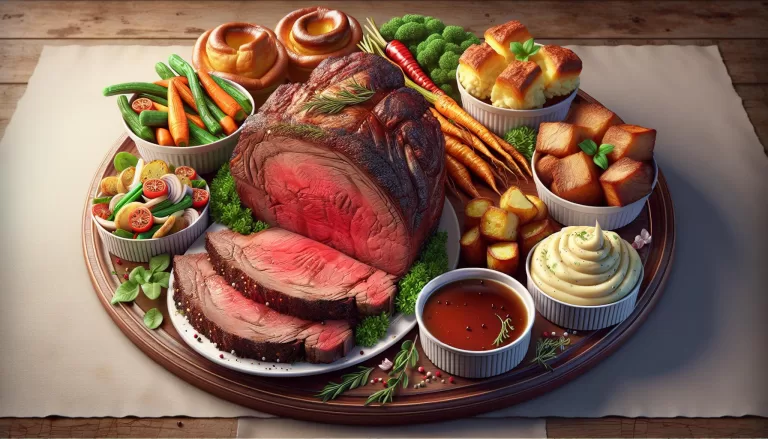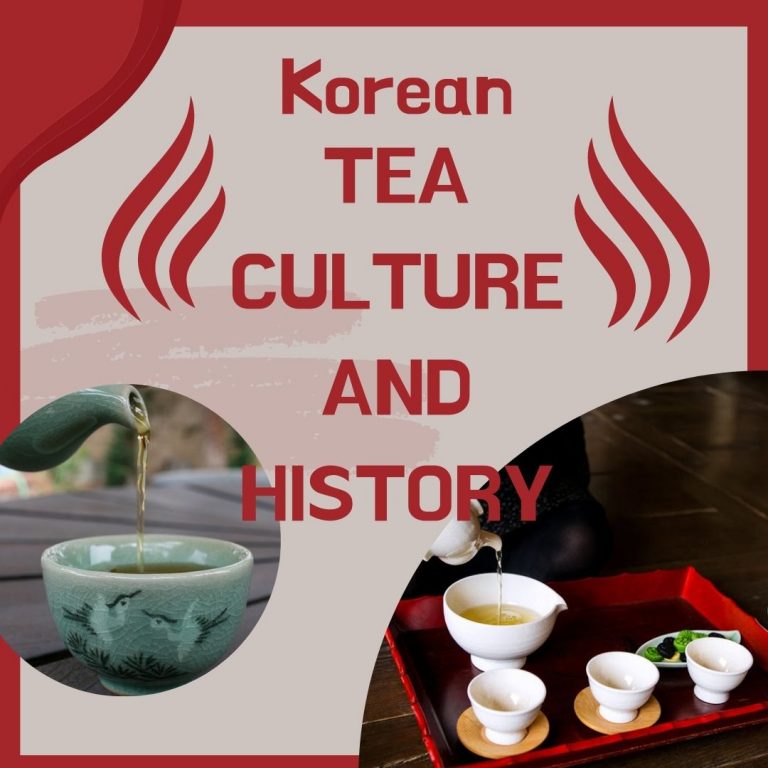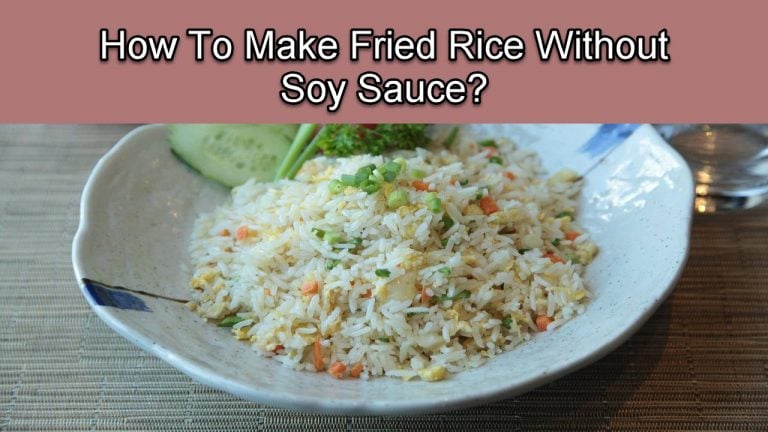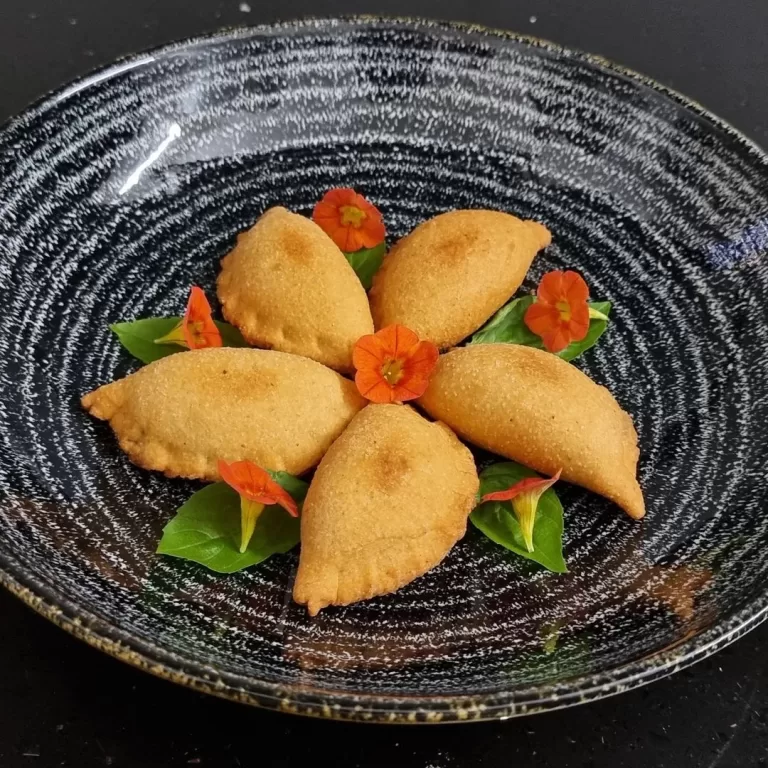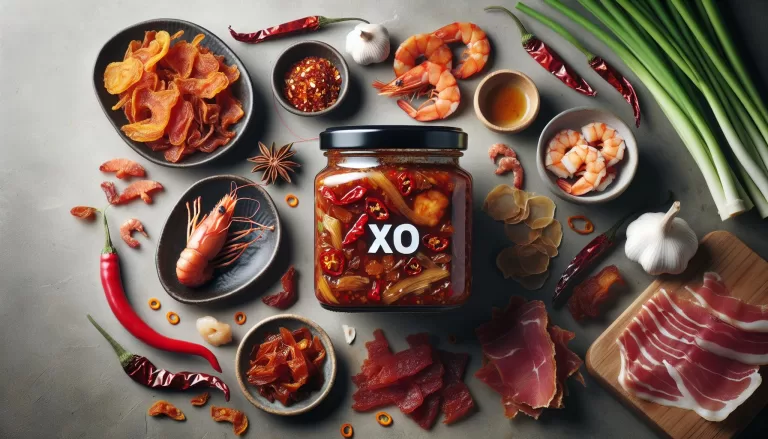How To Prepare Chinese Tea
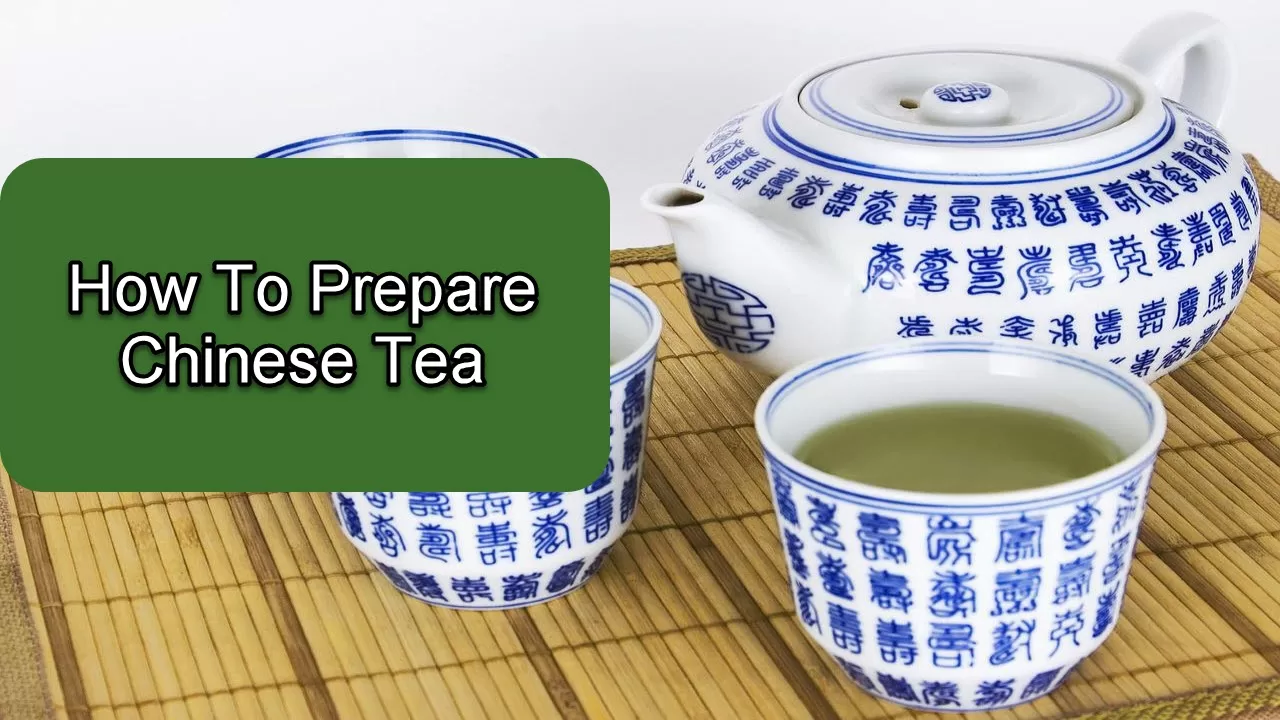
Are you a tea enthusiast? May it be Chinese Tea, Black Tea, Green Tea, Oolong Tea, Pu’erh Tea, or White tea, these teas have numerous health advantages. Drinking tea makes you feel relax. Traditional Chinese methods are used to process tea leaves. Chinese tea is enjoyed all through the day, including at meals, as a replacement for plain water, for health, or simply for enjoyment.
Following a few basic guidelines will help you learn how to correctly make Chinese tea. The best tasting tea in the world can have a terrible taste if it’s brewed the wrong way, and a cheap tea can be quite delicious if it’s prepared well.
On the back of certain tea bags, there are specified steeping instructions. This article will show you how to make a Chinese tea the right way. If you want to know more, keep scrolling and reading.
Prepare Chinese Tea

Factors That Influence Brewed Tea Quality
Quality Of The Tea
Make use of the best high quality tea you can find. Good quality dried tea leaves are whole, smooth, and robust. It should also have a slight heaviness in your hands. If your tea appears feather-light in your hands, it could be over-dried or old. With mild handling, good quality loose leaf should not break or crumble. Tea leaves that have been steeped should be glossy and smooth to touch.
Quality Of The Water
When brewing tea, start with good water because it accounts for roughly 90% of the final product. The flavor and quality of water vary drastically depending on the area. If your water tastes excellent straight from the tap, it’s likely to brew good tea. If the tap water has an unpleasant flavor to it, for instance, chlorine, metallic, earthiness, and other flavors will be present in the tea.
Exact Measurement
Fill the tea pot with the exact amount of tea. 1 rounded teaspoon per 8 oz cup. is an excellent starting point.
Proper Steeping Temperature
Different types of tea require various steeping temperatures. The most common mistake individuals make while making tea is using the improper steeping temperature. You have the option to use a thermometer or check for hints to determine the temperature.
Black tea is often brewed with water that has reached a full, rolling boil temperature of 212 degrees. Oolong or Wulong tea should be brewed with water that is slightly below boiling point, between 190 and 203 degrees. The water should be rapidly boiling and many bubbles should be rising in the kettle, but not quite breaking the surface. Green tea should be prepared using water that is somewhat cooler, between 160 and 180 degrees. The steam from the kettle should be wafting or gently swirling. To prepare white tea, the water should be even cooler, anywhere from 150 to 160 degrees. For herbal teas, it should generally be prepared with boiling water temperature.
Proper Steeping Time
Different teas need different brewing times. Black teas need 4-6 minutes to steep. Darjeelings are an exception, you may steep them for 2-3 minutes. Oolong teas vary a lot, so you’ll have to test or stick to the steeping directions on the bag. Usually, a lot of oolongs are ready in 3–4 minutes, while others require 6–8 minutes. Green teas should be brewed for only 2-3 minutes on average. White teas should be steeped for around 2 minutes, while some can be steeped for much longer and still yield decent results. Teas made from puerh should be brewed for at least 7-8 minutes. Herbal tea should be steeped for at least 4-6 minutes, but some can be steeped for up to 10 minutes.
Letting The Tea Leaves To Fully Expand
All types of tea require enough space for the leaf to expand rapidly when steeping. Whatever brewing methods you employ, provide enough space for the leaf to expand up to 3-5 times from its original size. It is best to leave the tea leaves loose in the pot and strain later.
Final Stage Of Steeping Process
After the tea has steeped for the required amount of time, remove the tea leaves from the liquid. If it is steeped for too long, most teas will become bitter. This process is simplified by using a tea infuser. It is also possible to strain the brewed tea away from the leaves.
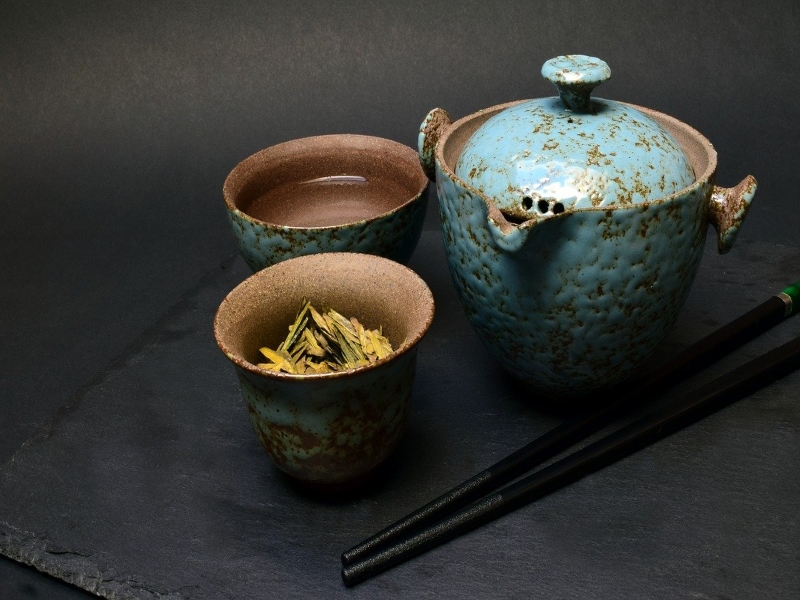
Chinese Tea Ceremony
Chinese Tea Ceremony is a traditional type of a typical East Asian tea ceremony observed in Chinese culture, including the traditional preparation and presentation of tea. In terms of tea making, flavor, and occasion, tea culture in China contrasts from that of Western countries such as the United Kingdom, the United States, and Russia, as well as nearby East Asian countries such as Japan and Korea. Tea is still widely drank in modern China, on both informal and formal settings. In addition to being a popular drink, it is an important component of both traditional Chinese medicine and Chinese cuisine.
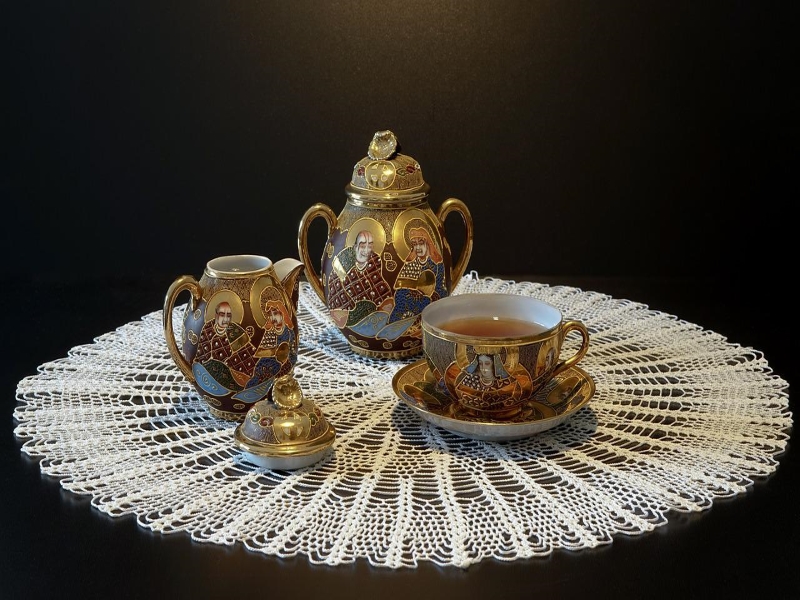
Chinese Tea Drinking Traditions
In Chinese culture, there are various unique settings in which tea is brewed and enjoyed, and it is totally retained in Mainland China.
Sign Of Being Respectful
Persons of the younger generation are expected to respect members of the older generation by pouring a tea cup, according to Chinese culture. Traditional holiday celebrations include taking their seniors to restaurants for tea. Tea is served to elder family members by newly married couples. People from lower social classes used to offer tea to society’s upper classes. With the rising freedom of Chinese society, the meaning of this regulation has become muddled.
A Sign Of Apology
Tea may be served as part of a formal apology in Chinese culture. Children who have caused trouble, for instance, may offer tea to their parents as an expression of remorse and submission.
To Show Gratitude And Celebrate Marriage
In a traditional Chinese wedding ceremony, the bride and groom kneel in front of their respective parents, as well as elderly relatives such as grandparents, and give them tea before thanking them, symbolizing their gratitude and respect. The bride and groom are expected to serve both families, according to tradition. This procedure represents the merging of the two families.
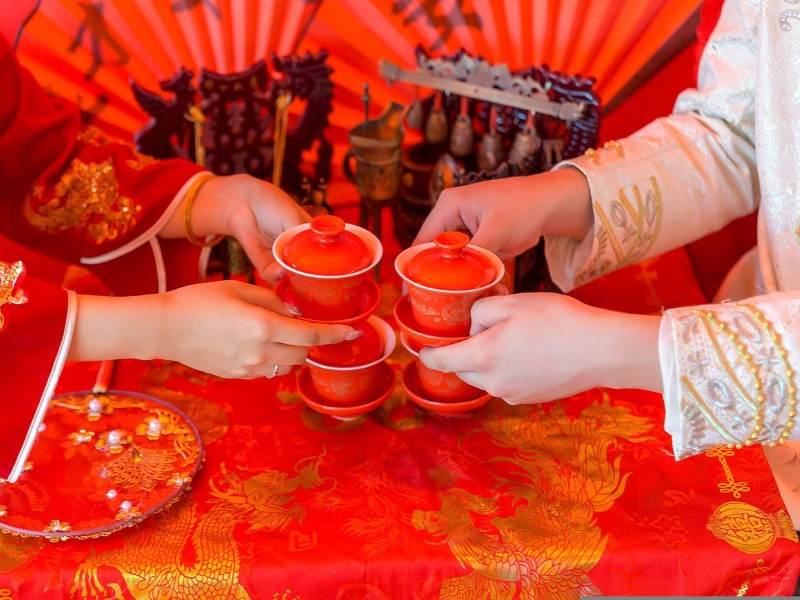
Making Chinese Tea
Green tea, yellow tea, white tea, oolong tea, and Pu’er tea are the main kinds of Chinese tea.
Preparing Chinese Green Tea
Because Chinese green tea is delicate and soft, there are a few aspects that must be considered when brewing it properly.
Chinese Green Tea Brewing Preparation
Top-drop Method
Pouring hot water into a glass pitcher and then adding the fresh tea leaves is the top-drop method. To put it another way, the tea leaves come after the hot water. This approach is perfect for making the most delicate teas.
Mid-drop Method
This process reduces the chance of the tea’s scents being destroyed by high temperatures. The brewing procedure is divided into three stages: hot water, tea leaves, and add more hot water. Basically, after half of the water has been poured in, the tea leaves are added. Flat or bud-shaped tea leaves are best for this procedure.
Bottom-drop Method
This is the most common technique for brewing green tea, and it works with all tea leaves of any grade. Some green teas, whose leaves are flat and tend to float, or whose nutritional component has to be activated by hot water, should be steeped in the bottom-drop method.
Brewing Temperature For Chinese Green Tea
Brewing temperature is 80°C – 85°C.
Brewing Time For Chinese Green Tea
Brewing time is 1–5 minutes if using a glass vessel. Depending on your personal preference, you have the option to adjust the brewing time.
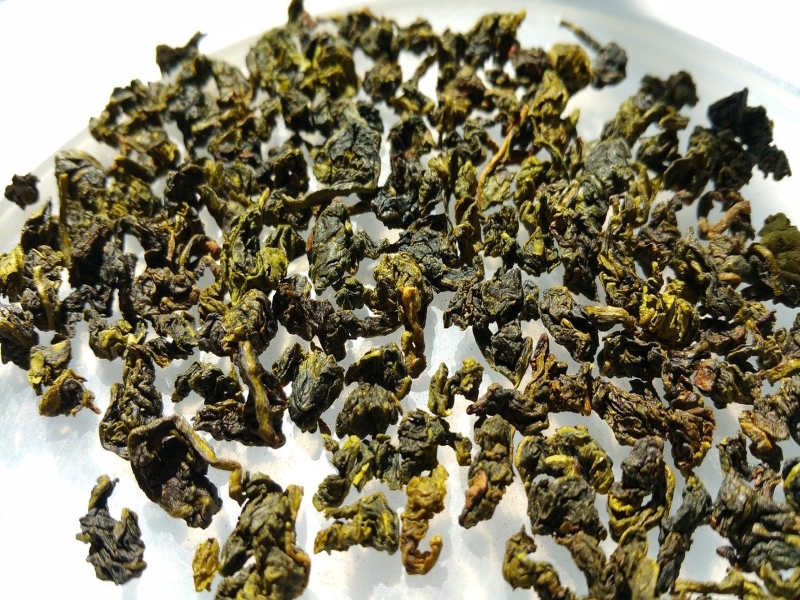
Preparing Oolong Tea
Semi-fermented oolong tea tastes like a mixture between green and black tea. It’s extremely light and fresh. It has a remarkable deep complex taste. There are two types of Oolong tea. The Light or moderate fermented Oolong tea (Fermentation degree is 10% – 50%). Examples of this type of tea are Anxi Ti Kwan Yin Fragrant (Tieguanyin), Anxi Ti Kwan Yin Original (Tieguanyin), Anxi Ti Kwan Yin Sour (Tieguanyin), Anxi Ti Kwan Yin, Strong (Tieguanyin) and Taiwan oolong tea. The second type is deep fermented Oolong tea (Fermentation degree is 50% – 70%). An example of this tea is Wuyi Big Red Robe (Da Hong Pao).
2 Methods Of Brewing Oolong Tea
Teapot Method
For a longer brewing time, use fewer tea leaves and more hot water. For a 125ml teacup or gaiwan, use 2 teaspoons of tea, 4 teaspoons for a 250ml glass, and 8 teaspoons for a 500ml teapot.
Infuse tea leaves for 2-5 minutes in 100°C hot water for Ti Kwan Yin or Taiwan Oolong tea. Re-steep for another infusion or two. You have the option to adjust according to personal preference.
Gongfu Method
To aid digestion, gongfu tea is best taken after a meal.
To prepare, warm the Gaiwan or tiny teapot with hot water before discarding it. In a 20 ml to 30 ml water, put 1 g of Oolong tea. Boiling water (100 °C) is poured into the clay teapot. Then, tilt it, and slowly rotate it two times before discarding the water. This method is to activate the tea leaves and stimulating the distinct aroma of the oolong tea. Refill the clay teapot with boiling water once more. For light to moderate fermented Oolong teas, such as Ti Kwan Yin or Taiwan Oolong tea, incorporate tea for around 40 seconds for the first brew, then add an extra 15 seconds for the second brew.
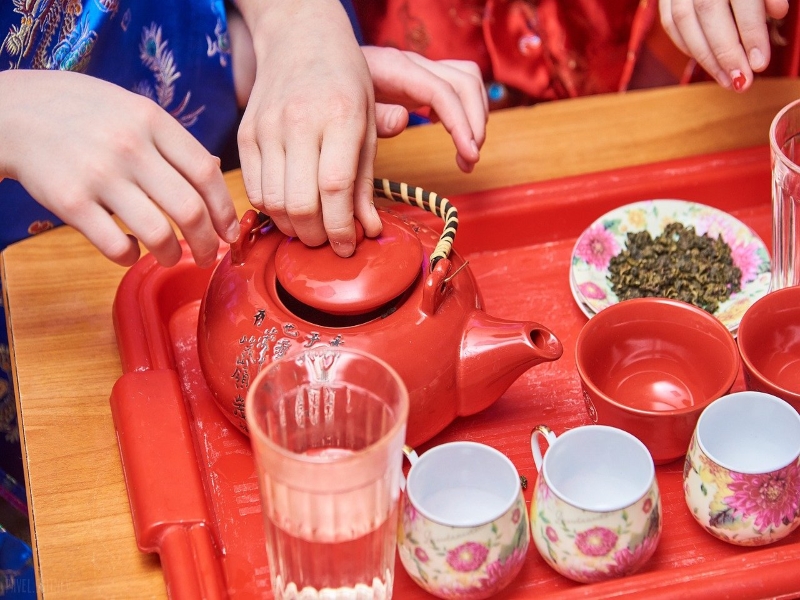
Brewing Chinese Tea The Traditional Way
Equipment
- Tea Strainer
- Teapot
- Kettle
- Tea pitcher
- deep plate or bowl
- brewing tray
- water
- tea towel
- tea leaves
- tea-leaf holder
- teacups
- tongs
Instuctions
- Start preparing the Chinese tea set first. Heat water in a kettle. Then, to warm up the tea set, place the teapot, snifter teacups, and ordinary teacups in the bowl and pour the hot water over them. Remove the teapot and cups from the bowl after that. If the cups are too hot to handle with your hands, use the tongs to handle them. The tea, customarily oolong, is carried around in a traditional Chinese tea ceremony for participants to evaluate and appreciate its appearance, scent, and quality.
- To start preparing Chinese tea, scoop the loose tea leaves from the tea canister with the tea-leaf holder. Place the tea leaves into the teapot using the tea leaf holder. The amount of tea and water required will vary depending on the kind of tea, its quality, and the size of the teapot, but one teaspoon of tea leaves for every six ounces of water is a good start.
- When making Chinese tea, it’s necessary to get the water to the right temperature, which varies depending on the type of tea. For each tea kind, heat your water to the appropriate temperatures. Place the teapot in the bowl and pour the hot water into it until it overflows.
- Place the lid on the teapot after pouring the water and scooping away any excess bubbles or tea leaves. Fill the teapot with more hot water to maintain the same temperature inside and outside the teapot.
- Fill the tea pitcher with brewed tea. Fill the tea snifters with tea using the tea pitcher. If you want to make the process easier or if your tea set doesn’t feature snifter cups, pour the tea straight from the teapot into standard teacups instead of using the tea pitcher and snifter cups.
- Place the teacups upside down on top of the narrow teacups after filling the snifter cups with tea. This important gesture is thought to bring guests fortune and happiness.
- Pour the hot water into the teapot while retaining the same tea leaves and holding the kettle just over the teapot. To avoid removing the flavor from the tea leaves too quickly, pour the water just over the teapot. Cover the teapot with the lid.
- Tea should be steeped. The duration of the steeping period is determined by the size and quality of the tea leaves. In general, whole-leaf tea steeps longer, but high-quality tea takes less time to prepare.
- Fill the tea snifters with the tea that has been poured into the tea pitcher. The tea should then be transferred from the snifters to the teacups. The tea is now ready to be consumed. Tea drinkers should hold the cup with both hands and inhale the aroma of the tea before taking a sip. Three drinks of varying sizes should be taken from the cup. The first sip should be small; the second should be the largest, major sip; and the third should be enjoyed as an aftertaste before emptying the cup.
